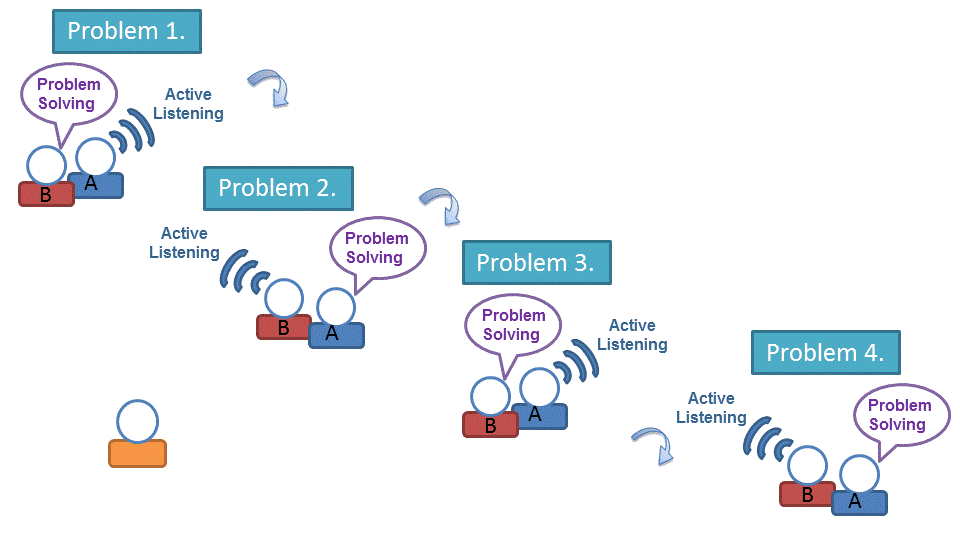Problem-solving
Case studies
Students (individually, in pairs or in groups) analyze an authentic scenario and apply course ideas to provide a solution.
Promotes: inductive and analytical reasoning, knowledge integration
- About Case Studies (SALTISE)
- Case Studies Active Learning Activities (SALTISE)
- Additional materials for Case Studies by The K. Patricia Cross Academy
- Online Teaching Adaptation: Case Studies by The K. Patricia Cross Academy
Teaching Technique 24: Case Studies video © The K. Patricia Cross Academy
Teaching by Case Study video © Standford University
The Case Study Method for Advanced Teacher Education video © National Academy of Advanced Teacher Education
Problem-based learning
An instructional approach wherein students learn through the direct experience of solving problems (SALTISE).
Promotes: Self-regulated learning, Content analysis, Application of knowledge
- About Problem-Based Learning (SALTISE)
- Problem-Based Learning active learning activities (SALTISE).
- Problem-Based Learning (How it works & why it is used) – Video (Maastricht University, Netherlands)
- Introduction to Problem Based Learning curriculum (Science) – Video (Rowan University, School of Osteopathic Medicine)
Different variations
- Documented problem-solving – Students keep track of the steps they take as they solve a problem (SERC, Carlton College).
- Structured problem-solving – Students work in teams to use a specific process to solve a complex problem (University of Toronto).
Think-aloud-pair problem solving
In pairs, students take turns listening while the other explains their solution and reasoning to a given problem.
Promotes: active listening, knowledge application
- Additional materials on Think-Aloud-Pair Problem-Solving by The K. Patricia Cross Academy
- Online teaching adaptation: TAPPS video by The K. Patricia Cross Academy
Teaching Technique 48: TAPPS video © The K. Patricia Cross Academy
Think-Aloud-Pair-Problem Solving is a technique that allows students to work in pairs using a turn-based approach.
The instructor begins by presenting a problem or asking students to think of a problem which they must solve. Taking turns, Student A presents the problem to their partner and explains their proposed solutions based on theory and assumptions. Student B is tasked with active listening, responding at the end of the explanation with feedback and comments to validate the solution or address any errors or imprecisions. These roles are then reversed so that Student B presents a new problem, followed by the problem-solving expression, and Student A engages in active listening, followed by feedback and comments in response to the explanation.


